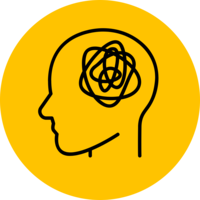Young Lives India
The Young Lives study aims to investigate the changing nature of childhood poverty in four low-income countries: India, Peru, Vietnam and Ethiopia. Young Lives India, follows the lives of around 3,000 participants in the States of Andhra Pradesh and Telangana. This sample is split into two cohorts, the younger cohort born in 2001-2002 and the older cohort born in 1994 -1995. Since 2002, Young Lives India has conducted five rounds of quantitative and four rounds of qualitative surveys, two school surveys, a five-phone call surveys (2020 - 2021) and COVID-19 phone call survey.
Study design
Cohort - birth, Cohort - primary caregiver and child, Cohort - accelerated
Number of participants at first data collection
2,011 (younger cohort)
1,008 (older cohort)
Age at first data collection
6 - 18 months (younger cohort)
7 - 8 years (older cohort)
Participant year of birth
2001 - 2002 (younger cohort)
1994 - 1995 (older cohort)
Participant sex
All
Representative sample at baseline?
No
Sample features
Country
Year of first data collection
2002
Primary Institutions
Centre for Economic and Social studies (CESS)
University of Oxford
Profile paper DOI
Funders
Children's Investment Fund Foundation (CIFF)
Echidna Giving
Economic and Social Research Council (ESRC)
Foreign, Commonwealth & Development Office (FCDO)
Netherlands Ministry of Foreign Affairs
Ongoing?
Yes
Data types collected



- Computer, paper or task testing (e.g. cognitive testing, theory of mind doll task, attention computer tasks)
- Interview – face-to-face
- Interview – phone
- Physical or biological assessment (e.g. blood, saliva, gait, grip strength, anthropometry)
- Secondary data
- Creative, arts-based and visual methods
- Ethnography or participant observation
- Interviews or focus groups
- None
- Geographic, spatial & environmental data
Engagement
Keywords
Consortia and dataset groups



